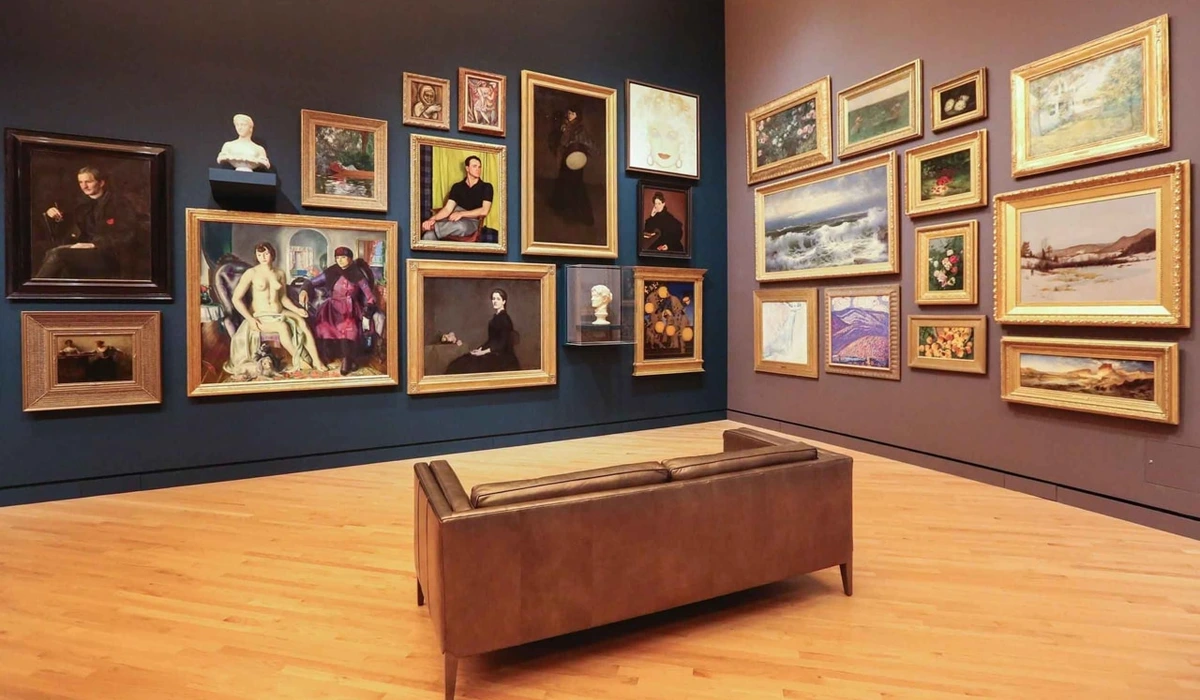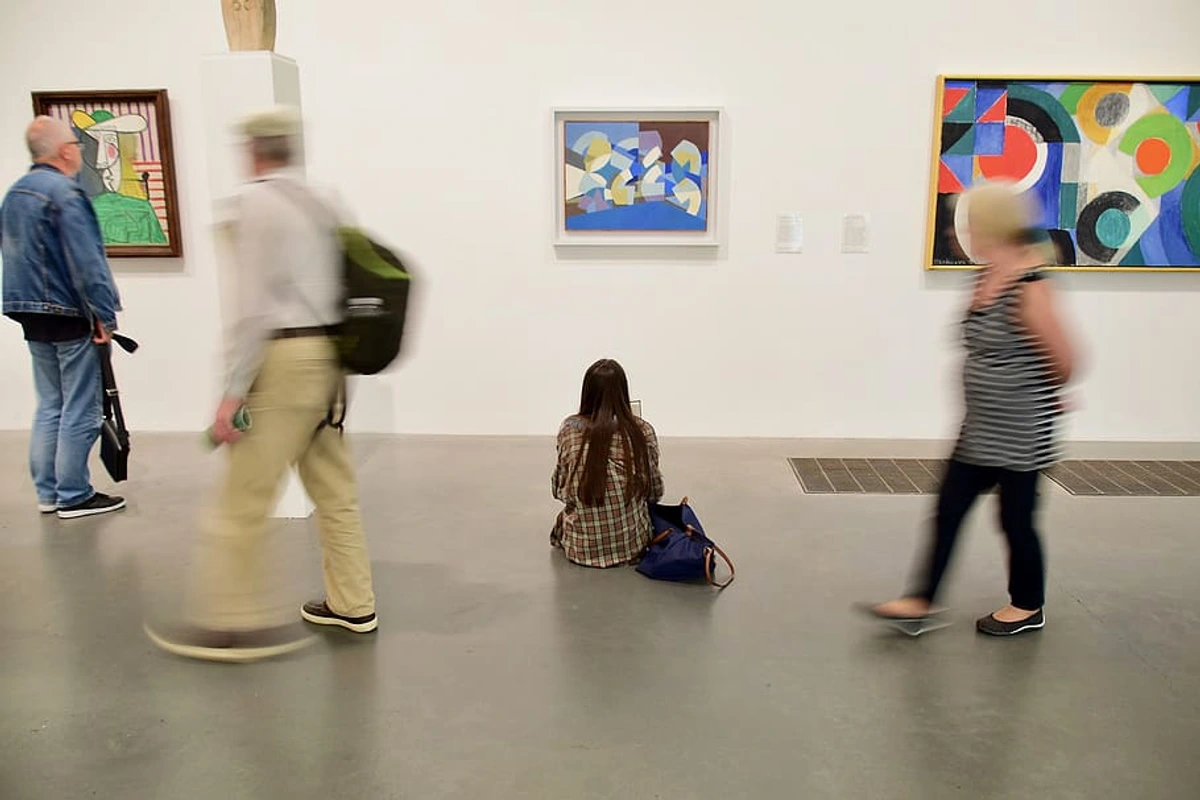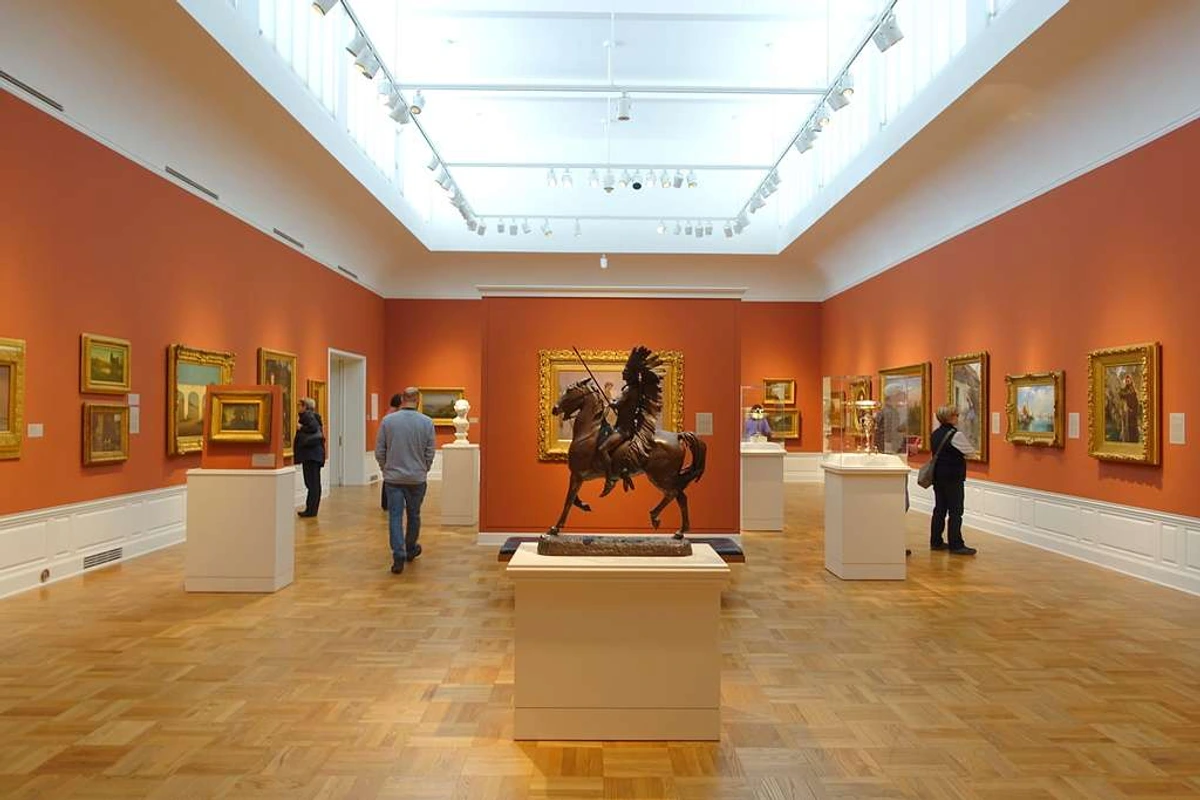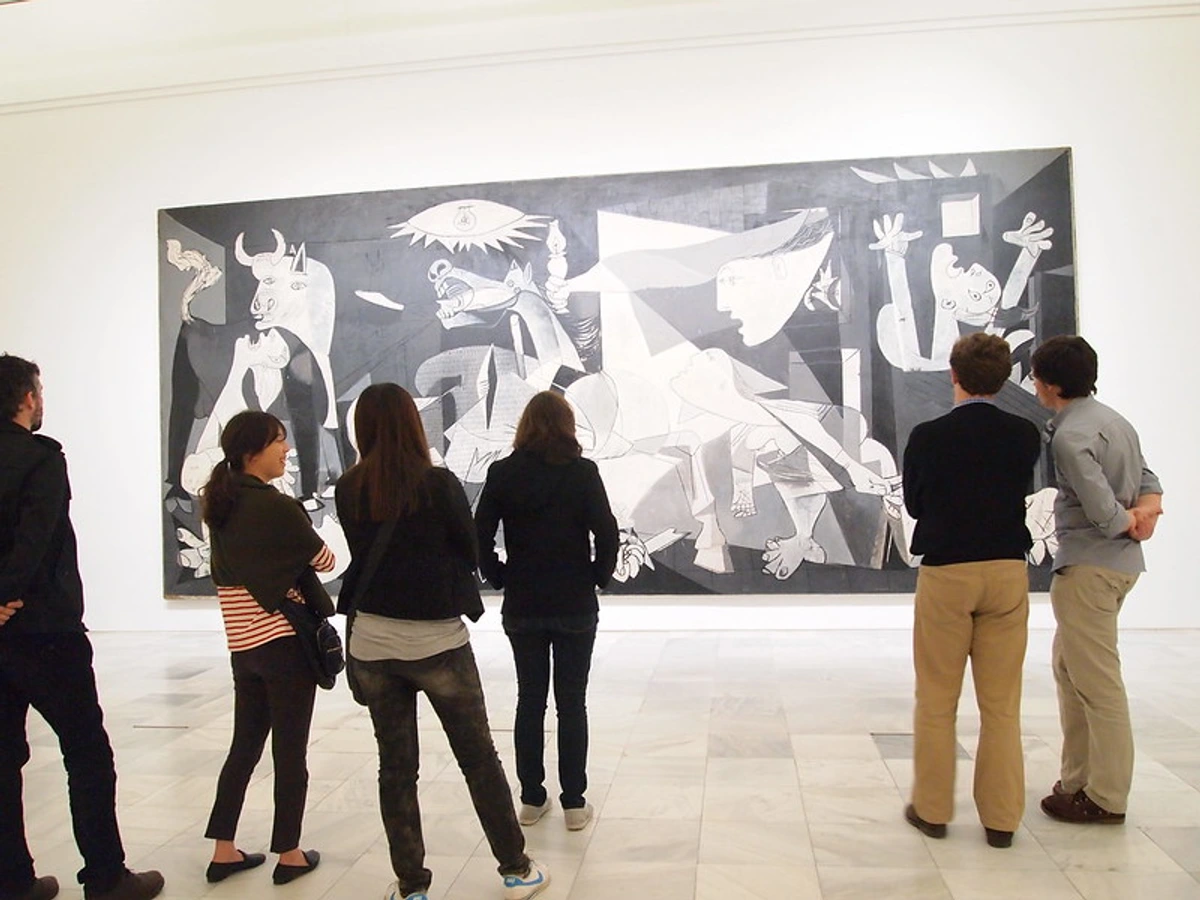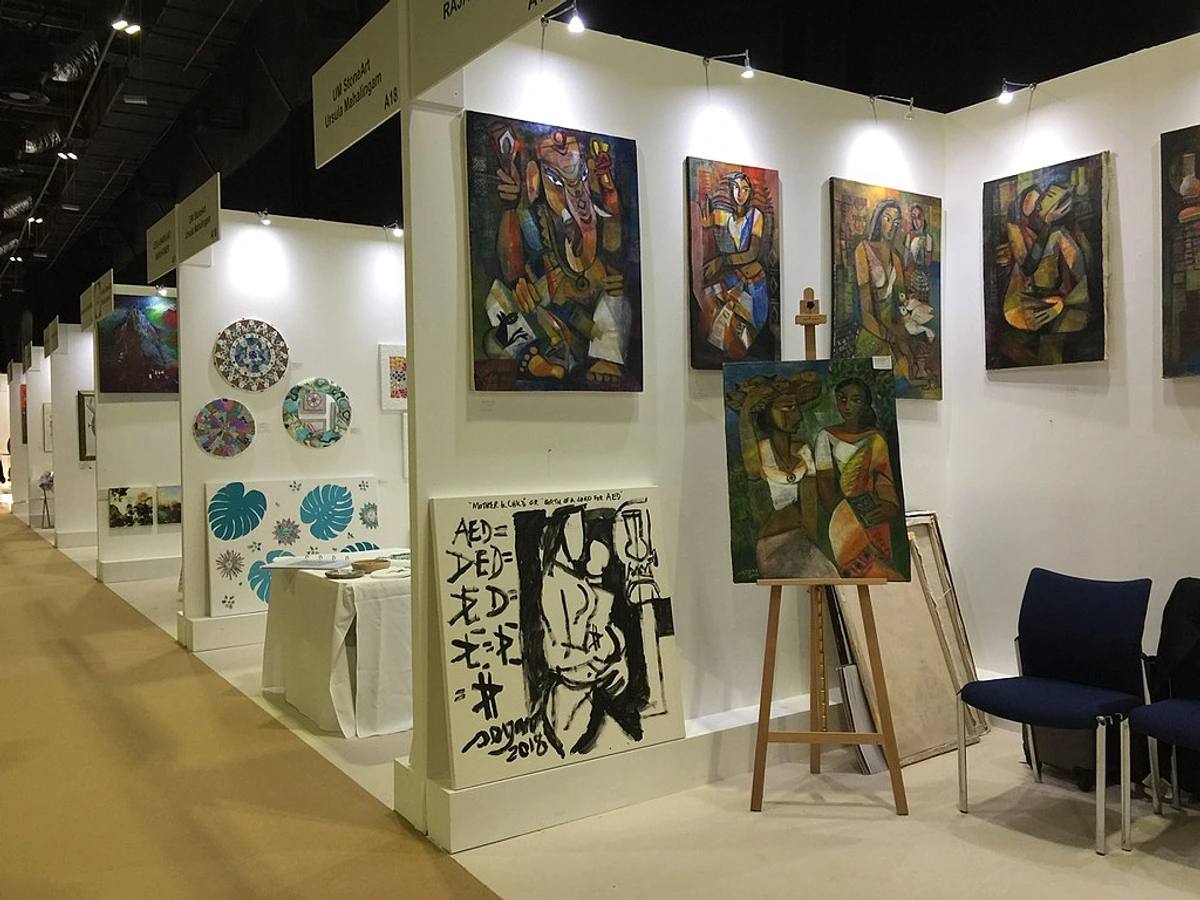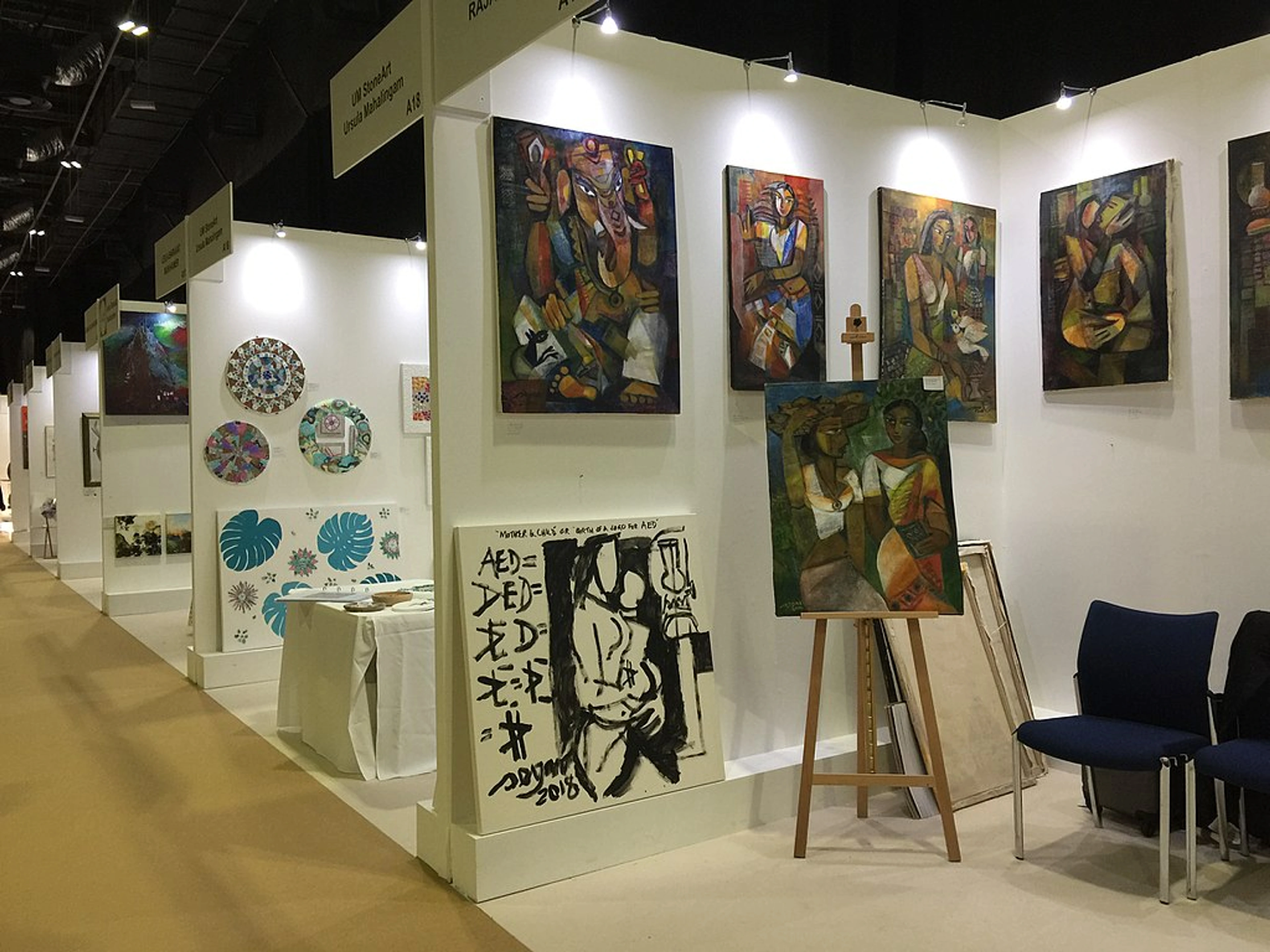
LA Art Galleries: Ultimate Guide to Culver City, Downtown, Fairs & More
Explore LA's best art galleries! Your ultimate guide to Culver City, Downtown, Hollywood & beyond. Find top galleries, emerging artists, art fairs & tips.
Navigating the Labyrinth: Your Ultimate Guide to LA's Best Art Galleries
Los Angeles. Just saying the name conjures images – sunshine, movies, traffic... and an absolutely sprawling, electric art scene. It's vast, sometimes intimidatingly so. Where do you even begin? You could spend weeks just scratching the surface, maybe feeling a bit like me sometimes – overwhelmed by choice and secretly wondering if staying home with Netflix is the easier option.
But trust me, diving into the LA gallery world is worth it. It’s a city brimming with creativity, from the established giants shaping the global art market to the gritty, experimental spaces pushing boundaries. Forget dry museum tours (though LA has some great museums too); galleries offer a more intimate, often free, and constantly evolving glimpse into the art world's pulse.
This isn't just a list; it's your companion guide. Think of it as getting tips from a friend who’s been there, maybe gotten lost a few times (especially trying to find parking, but more on that later!), but ultimately found some incredible art (and maybe a decent coffee nearby). We'll cover the big names, the hidden gems, and how to actually enjoy the experience without feeling like you need an art history degree (though understanding art history can certainly enrich the visit!). We'll even touch on some specific LA artists and unique local movements you might encounter.
Why is LA Such a Hotbed for Art Galleries?
It's not just the sunshine (though maybe that helps the creative mood?). LA's art scene is a unique beast:
- Incredible Diversity: Reflecting the city itself, LA galleries showcase a massive range of styles, backgrounds, and perspectives. From slick contemporary art to raw outsider art, you'll find it all. You might see echoes of historically significant LA art movements like Light and Space or Finish Fetish alongside the cutting edge.
- Influence of Entertainment: The film and entertainment industry inevitably bleeds into the visual arts, fostering a culture of storytelling, visual innovation, and sometimes, sheer spectacle.
- Space to Experiment: Unlike the spatial constraints of cities like New York, LA often offers artists and gallerists larger spaces, allowing for more ambitious installations and exhibitions. This fosters a certain kind of LA Pop sensibility, distinct from its East Coast counterpart.
- World-Class Art Schools: Institutions like CalArts, UCLA, and ArtCenter feed a constant stream of fresh talent into the local scene, keeping galleries vibrant with emerging artists. Think of iconic figures like Ed Ruscha or Charles Gaines who have influenced generations, alongside contemporary powerhouses like Laura Owens, Sterling Ruby, Lauren Halsey, and Njideka Akunyili Crosby whose works often grace gallery walls here.
It feels different from Europe's art capitals or even other major US art cities. There's a certain energy here, a blend of laid-back cool and serious artistic ambition.
Planning Your LA Gallery Hop: Don't Get Lost in the Sprawl!
Okay, practical talk. LA is HUGE. You can't just wander aimlessly and expect to hit the jackpot (unless you're very lucky). Here’s how to approach it:
- Pick Your Zone: LA galleries cluster in distinct neighborhoods. Trying to hit Culver City, Downtown, and Hollywood in one afternoon is a recipe for freeway frustration. Focus on one area per outing. Key zones include:
- Culver City: A major hub with many established and mid-career contemporary galleries concentrated along La Cienega and Washington Boulevards.
- Downtown Arts District: Grittier vibe, lots of converted warehouses, often younger galleries and artist studios. Industrial chic meets contemporary edge.
- Hollywood/West Hollywood: A mix of established names, international outposts, and trendier spots along Santa Monica Boulevard and Highland Avenue.
- Mid-Wilshire/Miracle Mile: Home to major museums but also significant galleries, often in impressive architectural spaces.
- Santa Monica/Venice: More spread out, often featuring galleries with a coastal cool aesthetic, though some major players have moved eastward recently.
- Emerging Hubs: Keep an eye on blossoming areas like West Adams (near Culver City), parts of Boyle Heights, and the historic galleries along Chinatown's Chung King Road. These often host exciting, less-established spaces.
- Check Opening Hours & Exhibitions: This is crucial! Galleries aren't museums; hours are typically more limited. Most commercial galleries are open Tuesday through Saturday, generally from 10:00 AM or 11:00 AM to 5:00 PM or 6:00 PM. However, hours can vary, especially for smaller or non-profit spaces. Always check their website or call ahead before visiting. Exhibitions change frequently (usually every 4-6 weeks), so see what's currently on view – don't expect to see the same show you read about last month!
- Embrace Opening Receptions: Often held on Saturday evenings (though sometimes Thursday or Friday), openings are a fantastic way to see new shows first, mingle (or just people-watch – it's an LA pastime!), and often enjoy complimentary wine or beer. It's a very LA experience. Check gallery websites or online resources like
Curate LA,Contemporary Art Review Los Angeles (Carla)**, **Artillery Magazine**, the **LA Weekly** Arts section, or the LA sections of **Hyperallergic` for listings. Signing up for gallery email lists is also a great way to stay informed. - Consider Gallery Walks: While less frequent or centralized than in some cities, keep an eye out for specific neighborhood events. The Culver City Art Walk happens periodically. The Downtown Art Walk still exists but has shifted focus over the years; check their current programming. These can be fun ways to experience multiple venues in one go.
- Types of Galleries: Understand the landscape:
- Blue-Chip: Representing art world superstars (think Damien Hirst or Christopher Wool). Big names, big spaces, often big prices. Museum-quality shows are the norm.
- Mid-Career/Contemporary: Showcasing established and rising artists, often with a strong curatorial focus. This is often the sweet spot for discovering exciting work that's gained recognition but might still feel fresh.
- Emerging: Featuring up-and-coming artists, often more experimental and affordable. Great for spotting the next big thing and feeling the pulse of recent art school grads.
- Artist-Run Spaces: Often non-commercial, focusing on community, experimentation, and dialogue. Can be harder to find but offer unique perspectives.
- Niche Galleries: Some galleries specialize. For example, Fahey/Klein Gallery (Mid-Wilshire) is renowned for photography. Others might focus on prints, ceramics, or even digital art.
Getting Around: Parking & Transit Tips
Let's be real, navigating LA often revolves around the car.
- Parking: It varies wildly.
- Culver City: Metered street parking on main drags (La Cienega, Washington) can be competitive. Look for side streets (read signs carefully!) or paid parking structures, especially near the Helms Bakery District or Ivy Station.
- Downtown: Street parking is scarce and often metered with strict time limits. Paid lots are plentiful but can be expensive ($10-$20+). Plan accordingly or consider rideshare/transit.
- Hollywood/WeHo: A mix of metered street parking, permit-restricted residential streets (check signs!), and paid lots/structures. Valet is common at some larger galleries or events.
- Mid-Wilshire: Similar to Hollywood, with meters and some paid lots often associated with office buildings or museums.
- Public Transport: LA's Metro system is improving!
- Culver City: The Metro E Line (Expo) has stations (like La Cienega/Jefferson or Culver City station) within walking distance or a short bus ride/scooter ride to many galleries.
- Downtown: Well-served by multiple Metro rail lines (Red, Purple, Blue, Expo, Gold) and buses, making it one of the more transit-accessible zones.
- Mid-Wilshire: Several bus lines run along Wilshire Blvd, and the Purple Line subway extension is improving access.
- Hollywood: Served by the Metro B Line (Red) and numerous bus routes.
Planning your transport is almost as important as planning which galleries to see!
The Cream of the Crop: Must-Visit LA Galleries & Art Spaces
This isn't exhaustive (that'd truly be a book!), but here are some key players and types of experiences to seek out, representing the breadth of the LA scene, including many from your suggestions:
The Heavy Hitters (Blue-Chip & Major Contemporary)
These are the international powerhouses with significant LA outposts. Expect museum-quality shows and important names.
- Gagosian (Beverly Hills): One of the biggest names globally. Slick productions, major modern and contemporary artists.
- Hauser & Wirth (Downtown Arts District): More than just a gallery; it's a complex with multiple exhibition spaces, a restaurant, and programming. Housed in a former flour mill, the space itself is impressive. They represent major estates and leading contemporary figures.
- David Kordansky Gallery (Mid-Wilshire): Known for its influential program of contemporary artists, many with LA ties. Often features visually compelling and conceptually rigorous work.
- Pace Gallery (Mid-Wilshire): Another global giant with a significant presence near LACMA, showing major international artists and estates.
- Sprüth Magers (Mid-Wilshire): A highly respected international gallery with a strong program featuring influential female artists and key figures in contemporary art.
- Regen Projects (Hollywood): A long-standing and highly respected gallery (now firmly in the Hollywood zone!) representing a roster of influential international artists and younger stars. You might see work here by artists like Laura Owens or Anish Kapoor.
- Jeffrey Deitch (Hollywood): Known for ambitious, often thematic, and sometimes spectacular exhibitions that blur the lines between art, pop culture, and performance.
Culver City Contemporaries
This area remains a dense hub for excellent mid-career and established contemporary galleries. It's perfect for a concentrated day of gallery hopping.
- Blum & Poe: Strong focus on both West Coast artists (like Henry Taylor) and influential Japanese contemporary art (like Yoshitomo Nara). Moved here from Santa Monica some years back.
- Matthew Marks Gallery: A major New York gallery with a significant LA space, known for showing internationally renowned artists across various media.
- Anat Ebgi: Represents a diverse roster of emerging and established artists, often with visually engaging and conceptually driven work.
- François Ghebaly: Features an international program of cutting-edge contemporary artists, often known for ambitious installations.
- LAXART (Near Culver City): While technically a non-profit, it functions like a dynamic gallery, often giving emerging and mid-career artists significant show opportunities. Known for critical and timely exhibitions.
- Thinkspace Projects (West Adams/Culver City Adj.): Focuses on the New Contemporary Art Movement, featuring figurative, surreal, and pop-influenced work. Great spot for discovering artists in this vibrant genre.
- (Many others): Seriously, just walk down La Cienega Boulevard and Washington Boulevard – you'll stumble upon numerous respected spaces like Vielmetter Los Angeles, Moskowitz Bayse, and more. It's a rewarding exploration.
Hollywood & West Hollywood Highlights
Beyond the heavy hitters already mentioned, this area offers a compelling mix.
- Various Small Fires (VSF): Known for its critically acclaimed program championing conceptually rigorous work by a diverse group of international artists.
- Morán Morán: Represents a strong roster of contemporary artists, often featuring painting, sculpture, and photography with a distinct aesthetic.
- (And More): This area is dynamic, with spaces opening and sometimes moving, so keep an eye on listings.
Mid-Wilshire & Miracle Mile Gems
Beyond the museum giants and blue-chip outposts:
- Fahey/Klein Gallery: A premier gallery specializing in photography, showcasing iconic photographers and important contemporary works. A must-visit if you love the medium.
- (Proximity Advantage): Being near LACMA, the Petersen Automotive Museum, and the Academy Museum makes combining gallery visits with museum stops easy here.
Downtown Discoveries & Experimental Edges
The Arts District and surrounding downtown areas offer a different flavor – more industrial, often more experimental.
- Hauser & Wirth: (Mentioned above, but anchors the area).
- The Box: Known for historically significant and often challenging exhibitions, frequently highlighting overlooked LA artists and movements. Consistently strong curatorial vision.
- Night Gallery: A trend-setting gallery known for spotting and nurturing emerging talent, often with a distinctive LA aesthetic. A go-to for seeing what's next.
- Commonwealth and Council: A vital space known for its commitment to artists of color, women, and queer artists, often featuring conceptually rich and critically engaged work.
- Parker Gallery: Focuses on historical and contemporary art, often rediscovering overlooked artists or presenting established figures in new contexts.
- Nicodim Gallery: Represents an international roster of artists, known for often provocative and visually striking exhibitions across painting, sculpture, and installation.
- Château Shatto: Features emerging and mid-career artists with a focus on conceptually driven practices and innovative approaches.
- Nonaka-Hill: Specializes in contemporary art from Japan and related diaspora, offering a unique and focused perspective.
- Various Smaller Spaces: Keep an eye out for newer, often artist-run spaces tucked away in warehouse buildings. This is where you might find the truly unexpected – check resources like
Carlafor leads.
Santa Monica & Venice Vibes
While some major galleries have moved inland, the Westside still has its spots.
- L.A. Louver: A long-standing institution in Venice known for its commitment to California artists, particularly figures associated with the region's art history (like Ed Moses or Ken Price), alongside international names.
- (Coastal Exploration): You'll find smaller galleries and studios scattered throughout Venice and Santa Monica, often reflecting the area's unique cultural blend.
Non-Profits & Alternative Art Spaces
Beyond commercial galleries, these spaces offer crucial platforms for experimentation and community engagement.
- LAXART: (Mentioned under Culver City).
- Institute of Contemporary Art, Los Angeles (ICA LA): Located Downtown, this non-collecting museum offers dynamic exhibitions of contemporary art, often focusing on underrepresented artists and critical themes. Free admission.
- Los Angeles Contemporary Exhibitions (LACE): Situated in Hollywood, LACE has a long history of supporting experimental and emerging art practices through exhibitions, performances, and public programs.
- LAND (Los Angeles Nomadic Division): A unique non-profit that curates public art exhibitions in diverse locations across LA, bringing art outside traditional gallery walls. Check their website for current projects.
Don't Forget the Museums! (Gallery-Like Experiences)
While technically museums, these institutions have rotating exhibitions and collections that feel very relevant to the gallery scene.
- LACMA (Los Angeles County Museum of Art) (Mid-Wilshire): Huge collection, but pay attention to their modern and contemporary exhibitions in the BCAM and Resnick Pavilion.
- The Broad (Downtown): Focused entirely on contemporary art from the 1950s to the present. Free general admission (booking required). Excellent collection and special exhibitions.
- MOCA (Museum of Contemporary Art) (Downtown - Grand Ave & Geffen Contemporary): Two locations offering a deep dive into contemporary art history and current practices. The Geffen Contemporary often hosts large-scale, warehouse-style shows reminiscent of gallery installations.
- Hammer Museum (Westwood): Affiliated with UCLA, known for its cutting-edge contemporary exhibitions, particularly the "Made in L.A." biennial focusing on local artists – a fantastic survey of the current scene.
Making the Most of Your Gallery Visits
Okay, you've picked a spot, navigated the parking Fates, you're there... now what?
- Don't Be Intimidated: Galleries are (usually) free and open to the public. You don't need to be a millionaire art collector to walk in. Staff are often happy to answer questions if they aren't swamped (especially at openings, give them some space!).
- Look, Then Read (Maybe): Take time to just look at the art first. Form your own impressions. Then, grab the press release or checklist usually available near the entrance. It provides context about the artist and the work. Sometimes it clarifies things, sometimes it just adds art jargon – take what's useful. Learning how to read a painting (or sculpture, or video...) is a skill you develop over time.
- It's Okay Not to "Get" Everything: Seriously. Not every piece will resonate. Sometimes art is confusing, challenging, or just not to your taste. That's fine! Notice what you respond to, positively or negatively. What makes abstract art compelling can be very personal. Maybe you connect more with figurative work, or maybe you're drawn to the sheer energy of certain abstract pieces, much like some of the works I create myself (you can see some examples online).
- Ask Questions (Politely): If the gallerist or staff seem available (and it's not a packed opening), feel free to ask about the artist, the technique, or the price (if you're genuinely curious about buying art). Understanding art prices is a whole other topic!
- Gallery Etiquette: Pretty simple: Don't touch the art unless explicitly invited to (some installations are interactive, but assume not!). Keep voices low. Supervise children closely. Ask before taking photos (most allow it for personal use, no flash, but it's polite to check, especially in smaller spaces).
LA's Art Fair Fever & The Street Scene
Beyond the regular gallery circuit, LA buzzes with other art experiences:
Major Art Fairs
Several times a year, the international art world descends on LA for major art fairs. These are ticketed events, often bustling and overwhelming, but offer a chance to see work from hundreds of galleries under one roof. Key events include:
- Frieze Los Angeles: Typically held in early spring, this high-profile fair brings top international galleries to unique LA locations (like the Santa Monica Airport or Paramount Studios). Expect major names and significant buzz.
- Felix Art Fair: Often running concurrently with Frieze, Felix takes over the Hollywood Roosevelt Hotel, offering a more intimate (and sometimes quirkier) viewing experience within hotel rooms and suites.
- LA Art Show: Held usually in February at the LA Convention Center, this large fair features a broad mix of modern and contemporary art, including historical works, design, and international pavilions.
Attending a fair requires a different strategy – wear comfortable shoes! It's a whirlwind, but great for seeing a snapshot of the market. Check out tips for visiting art fairs.
The Vibrant Street Art Scene
While this guide focuses on galleries, you can't talk about LA art without acknowledging its incredible street art scene. Murals adorn buildings across the city, particularly concentrated in areas like the Downtown Arts District, Melrose Avenue, and Venice. It's a dynamic, ever-changing public gallery worth exploring in its own right. Sometimes spotting a stunning mural feels just as rewarding as discovering a gem in a gallery.
Thinking of Buying? LA as a Collector's Ground
Seeing all this art might spark the desire to own some. LA is a fantastic place for both seasoned and aspiring collectors.
- Diverse Price Points: While the Gagosians and Paces deal in high figures (often $100k+ for established names, millions for superstars), many mid-tier and emerging galleries offer work at more accessible price points. You might find compelling works by emerging artists starting from a few thousand dollars, or even lower for prints or works on paper. Mid-career artists might range from $10,000 to $100,000+. It's definitely possible to start an art collection on a budget if you explore galleries beyond the blue-chip giants.
- Direct Access: You're often closer to the source here. Galleries work directly with artists, many of whom live and work in LA (check out my own art journey shaped by living and working as an artist). Attending openings sometimes means meeting the artist themselves.
- Finding Your Taste: Visiting galleries is the best way to define your personal art style and taste. See what consistently draws you in. Maybe it's vibrant abstract art, maybe it's figurative painting, maybe it's sculpture with unique materials, maybe it's something else entirely. You can even find unique pieces reflecting styles you might discover in LA galleries when you decide to buy art online.
FAQs: Quick Answers for LA Gallery Goers
- Q: What's the single best neighborhood for gallery hopping?
- A: For sheer density and variety of established contemporary art, Culver City (along La Cienega/Washington Blvds) is hard to beat for a focused day trip. The Downtown Arts District offers a different, more industrial vibe with a great mix of major spaces and emerging galleries, also excellent for exploring on foot (once you park!). Hollywood/WeHo offers more blue-chip names clustered together.
- Q: Are most LA art galleries free to enter?
- A: Yes, the vast majority of commercial art galleries are free to visit during their regular opening hours. Opening receptions are also typically free. Non-profit spaces like ICA LA are often free too. Museums usually have admission fees (though some have free days/evenings). Art fairs require paid tickets.
- Q: How do I find out about current exhibitions and openings?
- A: Check gallery websites directly – they are usually up-to-date. Also, look at online resources like
Curate LA,Contemporary Art Review Los Angeles (Carla)**, **Artillery Magazine**, **LA Weekly** (Arts section), or the LA sections of **Hyperallergic`. Signing up for gallery email lists is highly recommended.
- Q: What are typical gallery hours?
- A: Most are open Tuesday - Saturday, roughly 10/11 AM to 5/6 PM. Always double-check online before you go, as hours can vary. Mondays are almost always closed.
- Q: Can I buy art directly from these galleries?
- A: Absolutely! That's their primary purpose (for commercial galleries). Don't hesitate to inquire about availability and pricing if a piece catches your eye and fits your budget. They often have price lists available upon request. Check out our guide on how to buy art for beginners.
- Q: What kind of price ranges should I expect?
- A: It varies hugely. Emerging artists at newer galleries might start under $5,000. Mid-career artists at established galleries often range from $10,000 - $100,000+. Blue-chip galleries regularly feature works well into six or seven figures. Prints and smaller works are generally more accessible.
Go Forth and Explore!
The LA art gallery scene can feel like a sprawling, exciting, sometimes confusing beast. But hopefully, you now feel a little more equipped to tackle it. Think of it as an adventure. Pick a neighborhood (or an art fair!), see a few shows, grab a coffee, maybe spot a mural, and soak in the creativity.
Don't aim to see everything. Aim to experience something. Find a piece that stops you in your tracks, makes you think, or just makes you feel something. That’s the real win. Whether you're a seasoned collector, a curious tourist, or just looking for an interesting afternoon, LA's galleries have something incredible to offer. Get out there and see for yourself!
